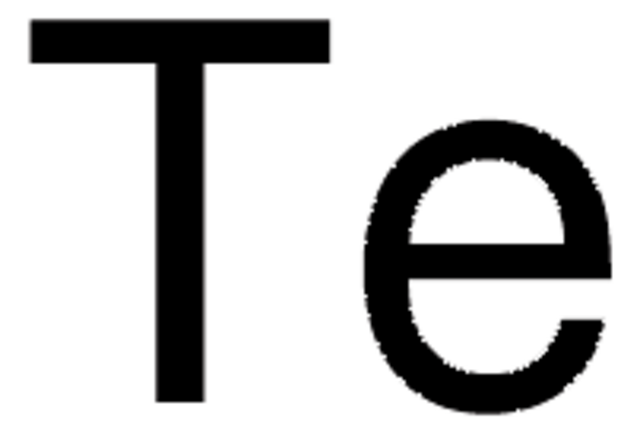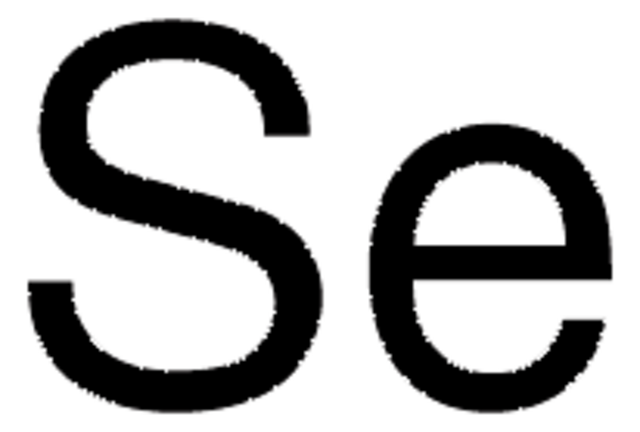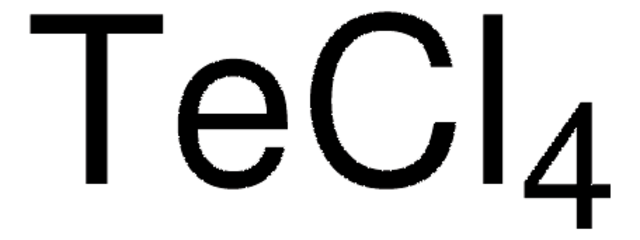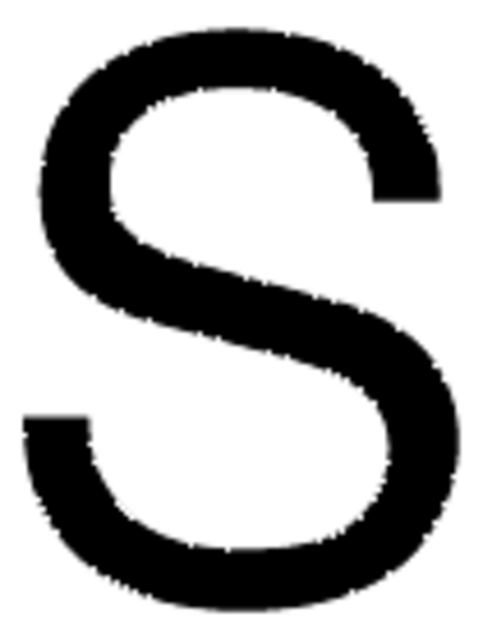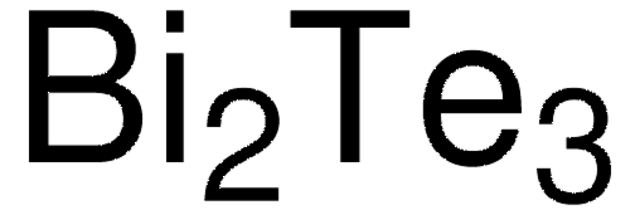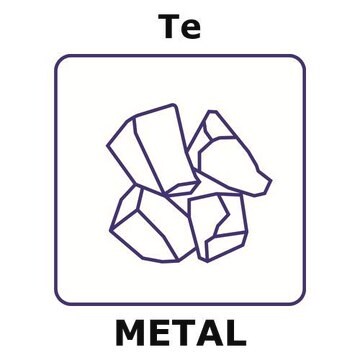266418
Tellurium
powder, −200 mesh, 99.8% trace metals basis
Sign Into View Organizational & Contract Pricing
All Photos(2)
About This Item
Empirical Formula (Hill Notation):
Te
CAS Number:
Molecular Weight:
127.60
EC Number:
MDL number:
UNSPSC Code:
12141913
PubChem Substance ID:
NACRES:
NA.23
Recommended Products
Quality Level
Assay
99.8% trace metals basis
form
powder
resistivity
5.8-33 μΩ-cm, 20°C
particle size
−200 mesh
bp
990 °C (lit.)
mp
450 °C (lit.)
density
6.24 g/mL at 25 °C (lit.)
SMILES string
[Te]
InChI
1S/Te
InChI key
PORWMNRCUJJQNO-UHFFFAOYSA-N
Looking for similar products? Visit Product Comparison Guide
Related Categories
General description
Tellurium is anon-radioactive and heaviest member of the chalcogen family. It has a widerange of oxidation states, from -2 to +6. It is widely used in the fields ofmetallurgy and electronics.
Application
Tellurium can be used as a precursor to prepare:
- Tellurium-based nanomaterials for semiconductor application, such as CdTe nanoparticles via solvothermal synthesis.
- Quantum dot solutions for fluorometric determination of bioactive compounds.
- Thermoelectricmaterials, such as Cu4Mn2Te4 by the melting-quenching-SPS method.
Tellurium, in combination with potassium hydroxide, mediates the quantitative pinacolization of aromatic carbonyl compounds.
Signal Word
Danger
Hazard Statements
Precautionary Statements
Hazard Classifications
Acute Tox. 4 Inhalation - Aquatic Chronic 4 - Lact. - Repr. 1B - Skin Sens. 1B
Storage Class Code
6.1D - Non-combustible acute toxic Cat.3 / toxic hazardous materials or hazardous materials causing chronic effects
WGK
WGK 2
Flash Point(F)
Not applicable
Flash Point(C)
Not applicable
Personal Protective Equipment
dust mask type N95 (US), Eyeshields, Gloves
Choose from one of the most recent versions:
Already Own This Product?
Find documentation for the products that you have recently purchased in the Document Library.
Customers Also Viewed
Khan, R.H. et al.
Synthetic Communications, 27, 2193-2193 (1997)
Zhe Liu et al.
Optics express, 21(6), 7799-7810 (2013-04-03)
ZnTe is an important p-type semiconductor with great applications as field-effect transistors and photodetectors. In this paper, individual ZnTe nanowires based field-effect transistors was fabricated, showing evident p-type conductivity with an effect mobility of 11.3 cm(2)/Vs. Single ZnTe nanowire based
Raymond J Turner et al.
Biotechnology advances, 30(5), 954-963 (2011-09-13)
Here, we overview the most recent advances in understanding the bacterial mechanisms that stay behind the reduction of tellurium oxyanions in both planktonic cells and biofilms. This is a topic of interest for basic and applied research because microorganisms are
Vijay P Singh et al.
Organic letters, 15(24), 6274-6277 (2013-11-28)
In an effort to improve the chain-breaking capacity of the natural antioxidants, an octyltelluro group was introduced next to the phenolic moiety in β- and δ-tocopherol. The new vitamin E analogues quenched peroxyl radicals more efficiently than α-tocopherol and were
Biomethylation of selenium and tellurium: microorganisms and plants.
Thomas G Chasteen et al.
Chemical reviews, 103(1), 1-25 (2003-01-09)
Our team of scientists has experience in all areas of research including Life Science, Material Science, Chemical Synthesis, Chromatography, Analytical and many others.
Contact Technical Service